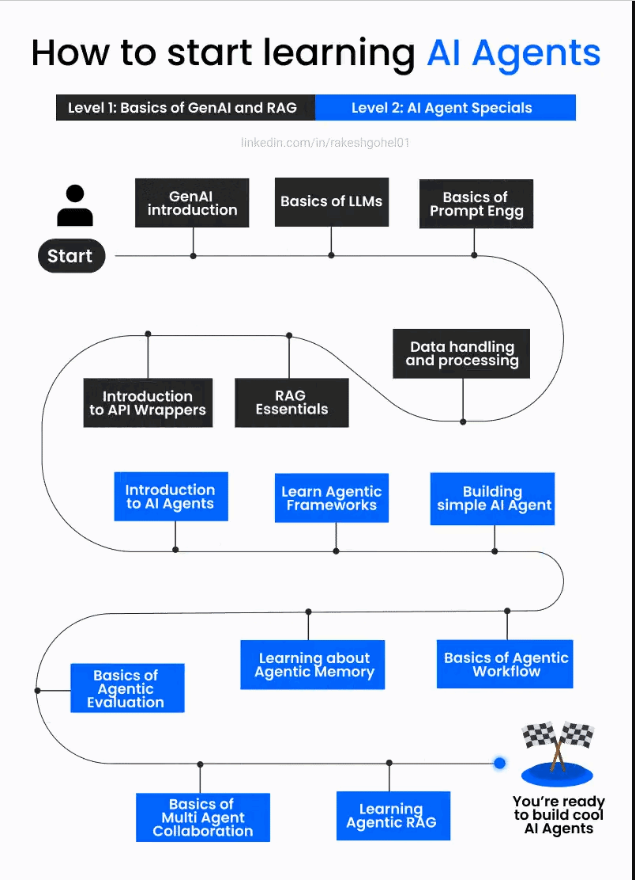From Hype to Blueprint: An Architect's Guide to Building Enterprise-Grade AI Agent Systems
From GenAI Basics to Building Practical Multi-Agent Systems
Muhammad Ali Amir
9/3/20253 min read


Navigating the discourse around AI agents often feels like traversing a landscape of buzzwords
without a clear compass. The disconnect between a simple idea and a complex implementation is
where most projects lose their way, stuck between a powerful concept and the practical realities of
deployment.
The truth is, building a robust, scalable AI agent system isn't about finding a single tool or a magic
framework. It's about a systematic, architectural approach—a disciplined blueprint for translating
high-level concepts into a tangible, phased strategy that can deliver real business value.
Here is a structured roadmap for architecting and deploying autonomous systems, designed to
move you from foundational principles to sophisticated multi-agent orchestration.
A Phased Blueprint for Agentic AI
Phase 1: Establishing the Foundation
This phase is about building the strategic and technical bedrock. It’s not just about understanding terms,
but about grasping the "why" and "how" of GenAI at an architectural level. We begin by gaining a
firm grasp of Generative AI principles to understand its strategic relevance to enterprise operations.
This leads to a deep dive into LLM fundamentals, where we analyze model architectures, capabilities,
and token limitations to inform our design choices. Finally, we establish strategic prompt engineering
as a core discipline, treating prompts not as one-off commands, but as a critical, version-controlled layer
of our system's code.
Phase 2: Integrating Core Components
Here, we build the core nervous system of our agent. The focus is on seamless integration and data mastery. This involves leveraging API wrappers and tool calls to connect LLMs with external systems, databases, and APIs, giving our agents the ability to act on the world. We then architect robust Retrieval-Augmented Generation (RAG) systems to ground our models with authoritative, proprietary data, transforming them from generalists into knowledgeable domain experts. Lastly, we implement disciplined data pipeline engineering to ensure the integrity, freshness, and accessibility of the knowledge our agents rely on.
Phase 3: Architecting Agentic Behavior
This is where the system truly comes to life. We move beyond simple interactions to build true autonomy. The first step is to define what makes a system "agentic" by understanding its core components—tools, memory, and a planning loop. We then move to evaluate and implement leading agentic frameworks such as LangChain, LlamaIndex, or AutoGen, selecting the right one based on the specific requirements of our use case. The phase culminates with the construction of our first single-task agent, putting all these principles into practice.
Phase 4: Enhancing System Autonomy
A reliable agent is one that can handle complexity and remember its context. This phase focuses on building that intelligence. We design sophisticated agentic memory architectures to enable both short-term context awareness for ongoing conversations and long-term knowledge retention for recall over time. We then master advanced workflow orchestration to enable our agents to handle multi-step, multi-tool tasks with a clear plan and execution loop. Crucially, we establish rigorous performance evaluation and observability to test, debug, and refine agent behaviors, ensuring reliability and predictability.
Phase 5: Scaling to Advanced Systems
The final phase is about unlocking exponential value. We scale beyond single agents to engineer multi-agent collaboration, designing systems where multiple agents, each with its own specialized role, communicate and cooperate to solve complex problems. We then implement advanced agentic RAG strategies to enable agents to not only retrieve information but also to synthesize insights from multiple knowledge sources, creating a truly intelligent, data-driven system.
The true work of an AI architect lies not just in writing code, but in designing intelligent systems—a disciplined fusion of LLMs, data, memory, and orchestration that enables autonomous action. This is the difference between a proof-of-concept and a business-critical solution.
Is your business ready to move from AI agents as a concept to a core strategic asset? We are just one message away from assessing your processes and charting a path to a more autonomous future.
© 2025. All rights reserved.
